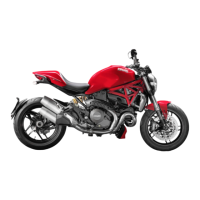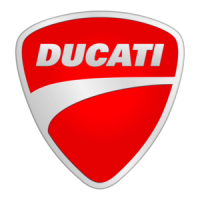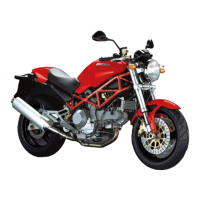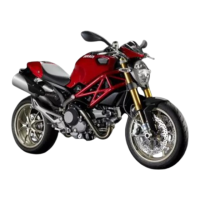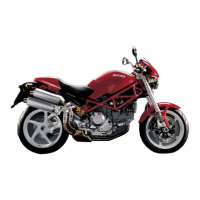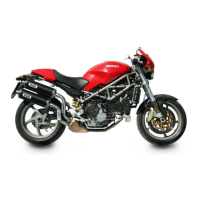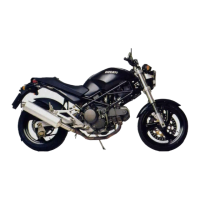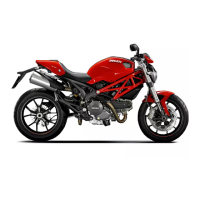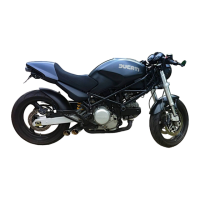Do you have a question about the Ducati Monster 1200S and is the answer not in the manual?
Covers general safety, warning symbols, and essential riding advice.
Specifies correct motorcycle usage, weight limits, and rider responsibilities.
Recommends protective apparel and outlines safety best practices for riding.
Explains noise, exhaust, and evaporative emission control systems.
Details warranty coverage, owner responsibilities, and limitations for emission systems.
Describes the instrument panel layout, display modes, and various warning/indicator lights.
Explains Riding Modes, DTC, ABS, DWC, DQS, and customization options.
Details data shown in CORE, FULL, TRACK layouts and menu navigation.
Explains the display of vehicle speed, gear, and engine RPM indication.
Covers residual range, lap time, fuel consumption, and trip meters.
Identifies the location and function of major controls on the motorcycle.
Details operation of handlebar switches, clutch lever, and throttle twistgrip.
Explains operation and adjustment of the gear change pedal and rear brake pedal.
Covers essential checks for coolant, brake/clutch fluid, tires, and chain tension.
Provides instructions for charging, jump-starting, and removing/refitting the battery.
Guides on adjusting front fork, rear shock absorber, and tire pressure.
Lists engine details, top-up fluids, and fuel system requirements.
Details electric system components, including lights, battery, and fuse box layout.
Covers general safety, warning symbols, and essential riding advice.
Specifies correct motorcycle usage, weight limits, and rider responsibilities.
Recommends protective apparel and outlines safety best practices for riding.
Explains noise, exhaust, and evaporative emission control systems.
Details warranty coverage, owner responsibilities, and limitations for emission systems.
Describes the instrument panel layout, display modes, and various warning/indicator lights.
Explains Riding Modes, DTC, ABS, DWC, DQS, and customization options.
Details data shown in CORE, FULL, TRACK layouts and menu navigation.
Explains the display of vehicle speed, gear, and engine RPM indication.
Covers residual range, lap time, fuel consumption, and trip meters.
Identifies the location and function of major controls on the motorcycle.
Details operation of handlebar switches, clutch lever, and throttle twistgrip.
Explains operation and adjustment of the gear change pedal and rear brake pedal.
Covers essential checks for coolant, brake/clutch fluid, tires, and chain tension.
Provides instructions for charging, jump-starting, and removing/refitting the battery.
Guides on adjusting front fork, rear shock absorber, and tire pressure.
Lists engine details, top-up fluids, and fuel system requirements.
Details electric system components, including lights, battery, and fuse box layout.
| Displacement | 1198.4 cc |
|---|---|
| Torque | 124 Nm (91.5 lb-ft) @ 7, 750 rpm |
| Transmission | 6-speed |
| Frame | Tubular steel Trellis frame |
| Rear Brake | 245 mm disc, 2-piston caliper |
| Fuel Tank Capacity | 17.5 l (4.6 US gal) |
| ABS | Standard |
| Traction Control | Ducati Traction Control (DTC) |
| Wheelbase | 1, 485 mm (58.5 in) |
| Engine Type | L-Twin, Desmodromic, 4 valves per cylinder |
| Power | 147 hp (108 kW) @ 9, 250 rpm |
| Front Suspension | Öhlins 48 mm fully adjustable upside-down fork |
| Rear Suspension | Öhlins fully adjustable monoshock, aluminum single-sided swingarm |
| Front Brake | 2 x 330 mm semi-floating discs, radially mounted Brembo 4-piston calipers |
| Seat Height | Adjustable 795 - 820 mm (31.3 - 32.3 in) |
